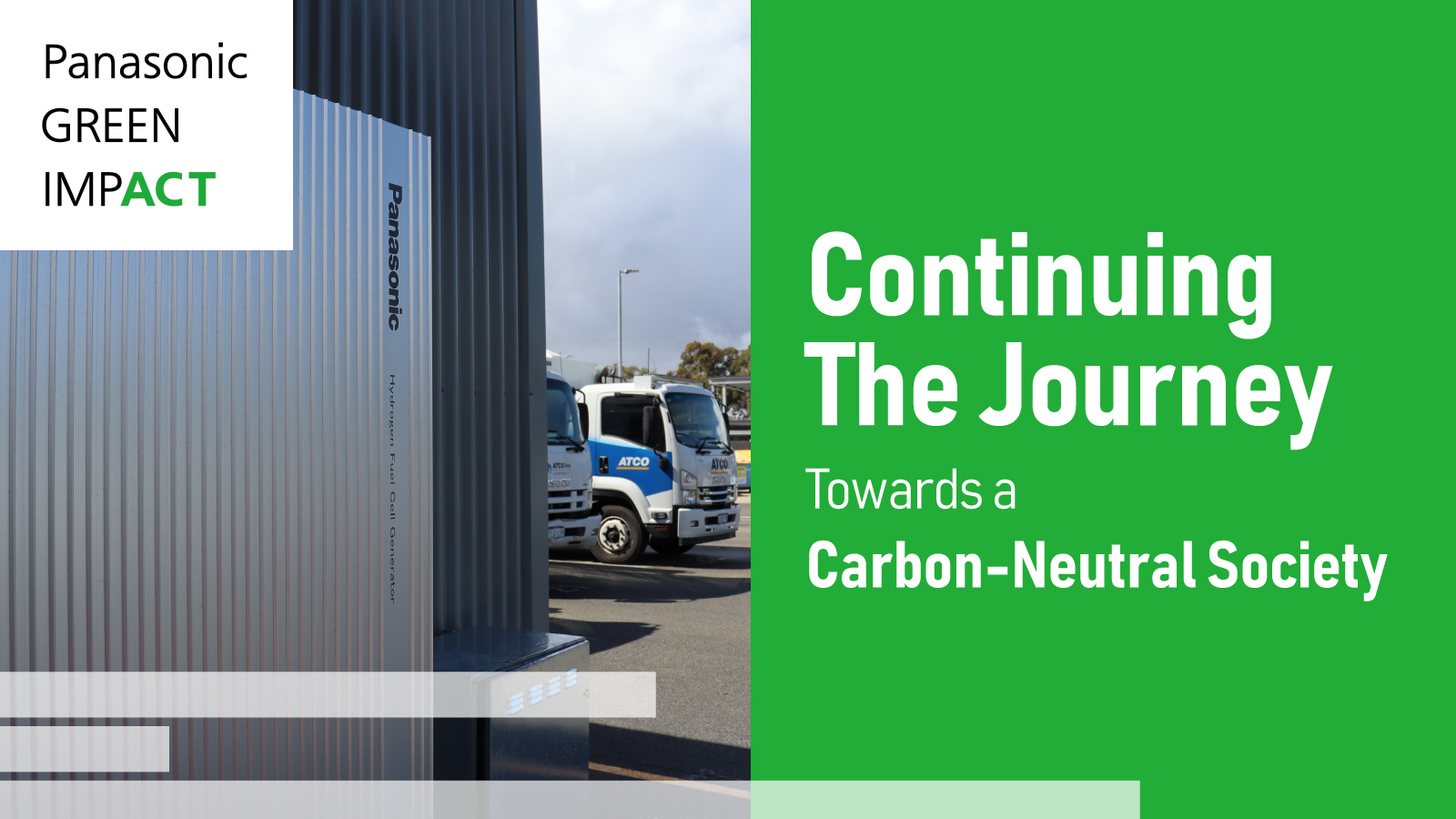
Dec 25, 2025
- Products & Solutions
- Stories
- Technology
- AI & Robotics
- R&D
- Business Solutions

Since its foundation in 1918, Panasonic has been committed to improving people’s well-being through innovation and the creation and development of technologies. In the midst of the profound challenges posed by climate change, Panasonic has reaffirmed its commitment to fighting global warming by announcing Panasonic GREEN IMPACT (PGI), a long-term environmental vision and commitment to bolster the company’s contribution to global decarbonization efforts towards achieving a carbon-neutral society by 2050.
With greater focus on sustainability, the company has been actively re-thinking the ways electricity is produced, stored and used and finding ways to expand the adoption of renewable energy sources that include the full-scale use of hydrogen. Most recently, Panasonic Australia has announced its partnership with engineering, logistics and energy company ATCO Australia, to install its 5kW pure hydrogen fuel cell generator at the ATCO Clean Energy Innovation Hub (CEIH) in Jandakot, Western Australia. The project is the first Australian test demonstration of Panasonic’s innovative pure hydrogen fuel cells.
Companies pursuing a net zero goal will seek to utilize all available renewable energy sources—including solar, wind, geothermal, hydropower, and biomass. Some have drawbacks, including large output variations depending on weather conditions and the inability to adjust power generation to cope with demand.
Hydrogen, one of the most abundant substances on earth, can be used as thermal energy and electric power without emitting CO2. Hydrogen fuel cells produce the highest proportion of electricity of any combined heat and power technology as an adjustable and decentralized solution, reducing dependence on centrally generated power while saving carbon emissions. In fact, analysts from the European Commission estimate that a firm commitment to clean hydrogen research and development could position it to meet 24 percent of the world’s energy needs by 2050.
Panasonic believes that hydrogen’s abundant supply and inherent flexibility makes it an essential component in its own journey towards net zero under its PGI initiative.
Since 2009, Panasonic has been producing residential fuel cells for the Japanese and European markets. The commercial use 5kW hydrogen fuel cell H2 KIBOU, installed at CEIH, employs the same technology as a residential fuel cell, but uses pure hydrogen as a direct fuel source instead of natural gas.
In April 2022, Panasonic deployed these fuel cells to open the H2 KIBOU FIELD in Kusatsu, Shiga prefecture, Japan. The H2 KIBOU FIELD is the world’s first demonstration facility that makes full-scale use of hydrogen fuel cells with a view to powering site operations entirely by renewable resources in the future.
The site is equipped with a power generation system that combines 99 5-kW pure hydrogen fuel cell generators (495 kW) and photovoltaic generators (approx. 570 kW) as well as lithium-ion storage batteries (approx. 1.1 MWh) for storing surplus power. The power generated by this system fully powers the entire fuel cell factory in Kusatsu. The power output of the three energy sources at the plant is optimized to ensure a stable supply that is not impacted by weather conditions.

H2 KIBOU FIELD at Panasonic’s Kusatsu plant in Shiga, Japan
The installation at the ATCO Clean Energy Innovation Hub (CEIH) is the first Australian test demonstration of the capabilities of Panasonic’s hydrogen fuel cells. When established, the CEIH was Australia’s first commercial scale renewable hydrogen supply chain—marking a significant technological step toward reducing Australia’s greenhouse gas emissions.
Pure hydrogen from CEIH’s pipeline is injected into the Panasonic hydrogen fuel cell, which converts it into electricity. The fuel cell can also support co-generation, where waste heat produced can be utilized for purposes such as heating water. The entire process is powered by renewable energy, resulting in zero carbon gas emissions being released into the atmosphere. The Panasonic hydrogen fuel cell produces up to five kilowatts of power and can scale this output by connecting and controlling multiple generator units to meet demand.
Russell James, General Manager for Hydrogen and Future Fuels at ATCO Australia said: “We are proud to have partnered with Panasonic in this innovative hydrogen initiative. The company’s knowhow, expertise and unique hydrogen fuel cell design allows us to efficiently convert hydrogen to electricity, contributing up to five kilowatts of power to our Jandakot maintenance workshops.”

Hydrogen fuel cell generator installed at CEIH
Panasonic hopes to contribute to the effort to achieve a carbon neutral society under the banner of its PGI long-term environmental vision by proposing new options to expand the adoption of renewable energy sources to include the full-scale use of hydrogen.
Under PGI, Panasonic will be enhancing the competitiveness of existing businesses centering on the fields of electrification, energy efficiency, and hydrogen, and these businesses are expected to contribute to 93 million tons of CO2 reduction in 2030.
Meanwhile, Paul Reid, Managing Director, Panasonic Australia, explained that while this fuel cell is a test model, Panasonic will closely monitor its performance within the harsh Australian climate and has plans to introduce a hydrogen fuel cell optimized for the Australian market in the coming years.
“We are excited to investigate applications for hydrogen fuel cells in various commercial and industrial settings including large-scale mining sites and remote micro-grids which currently rely on diesel. Through this partnership with ATCO Australia, we’re excited to explore the vast potential of decarbonization as a critical mechanism to create a more sustainable and secure energy future for Australians, and the world.” said Mr Reid.

Panasonic GREEN IMPACT
Hydrogen Fuel Cells Are Market Ready #CES2022 #PanasonicCES
The content in this website is accurate at the time of publication but may be subject to change without notice.
Please note therefore that these documents may not always contain the most up-to-date information.
Please note that German, Spanish and Chinese versions are machine translations, so the quality and accuracy may vary.